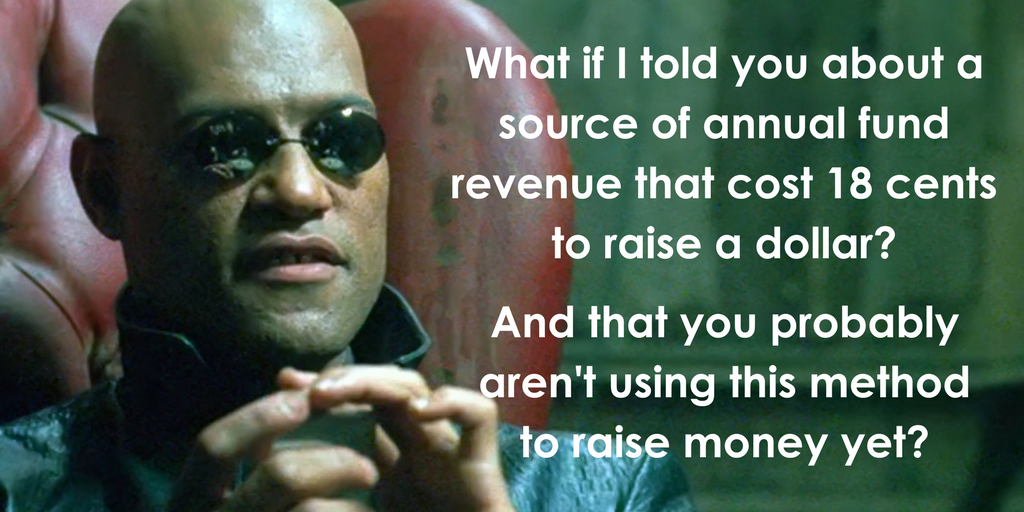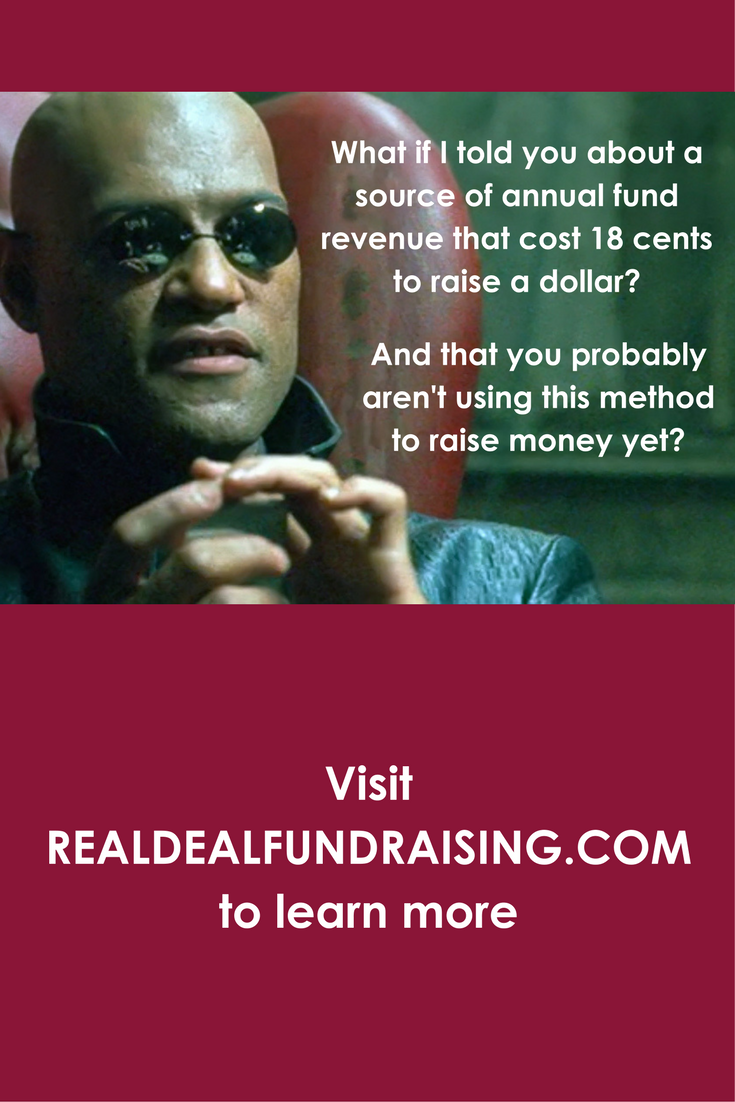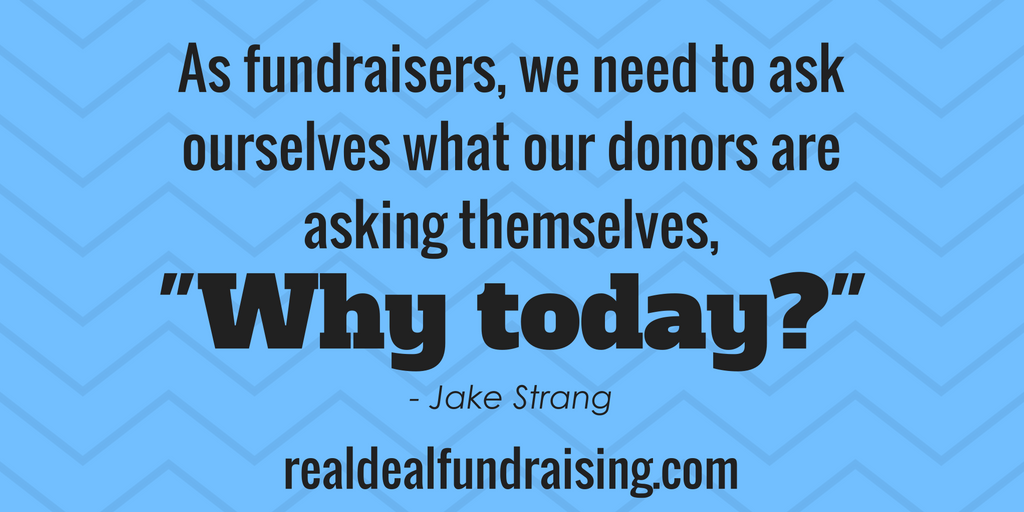|
What if I told you that there was a source of annual fund dollars out there that could cost you 18 cents to raise a dollar and raise those funds very quickly in a short period of time?
And what if I told you that you probably were not currently utilizing this particular source of revenue for your institution? You would be interested, right? Let me tell you what the secret source of revenue is . . . Facebook ads. Yep, Facebook ads. Believe it or not, I recently did a test in which I ran Facebook ads for year-end fundraising and the cost to raise a dollar was as low as 18 cents. In all honesty, this test grew out of the fact that I work for a very small shop and I’m the only fundraiser. I needed to come up with a calendar year-end giving campaign for our social media. Last year I spent a lot of time crafting unique messages to be used for each day in December. This year I was just running out of time and had no real creativity left in me. So instead, I decided to craft three very targeted year-end promotional messages and boost them significantly with Facebook ads. I had a little bit of extra money in my budget that I re-purposed in order to do this. Not a ton. I'm talking less than $1,200 to experiment with. So I divided my ad dollars up between three boosted ads. The first two were to promote general giving. One was targeted to those outside of our normal constituency on Facebook (people who don’t currently like our page). The second I boosted specifically to people within our community (who currently like our page). The third leg of this campaign was a specific boost to encourage our constituents to become “sustainers” (recurring monthly donors). All three of these campaigns were successful. First, our campaign outside of our normal constituency reached over 44,000 people who may or may not have ever heard of the school before but had our affinity with the religious community that we serve. We also garnered 14 new page likes. In the general year-end giving part of the campaign, over 500 people clicked on our giving website. We got 24 gifts out of this campaign, totaling almost $5,000. The results came out to only $0.18 to raise a dollar! This was revelatory to think that we could not only do public relations and communications work, developing our constituencies on social media, but at the same time raise some serious money The monthly sustainer campaign was also quite successful. We did not spend very much on that campaign, only about $100 but we got 4 new sustainer donors. These new donors represent $65 monthly (or $780 more per year). That doesn’t even fully represent the lifetime value of those monthly donors. If you just take the first year of value from those monthly donors then it was 34 cents to raise a dollar for this micro-campaign. I would argue it is well worth it when you consider that most of these donors will roll on from year to year as ongoing monthly donors I was surprised that something like Facebook ads could actually work for fundraising. I think my bias against it is because we want these digital mediums to be a free way to reach people. We know they have power to reach people but don’t want to pay for it. And yet, we know that mail and phone are worth the investment. Why are we not willing to invest real money in the digital mediums yet? Facebook (at least) is here to stay. It’s a reliable way of reaching people and we should start thinking about Facebook (and other forms of social media) with the same mindset we use when we think about phone to mail. Namely, that you have to spend money to make money. We need to start being smart about spending part of our fundraising budget on social media. Run some tests. Look at them with an eye to return on investment. Track the same kind of statistics that we track for phone and mail fundraising, including cost to raise a dollar. If you haven't been utilizing Facebook ads in order to grow your constituency on Facebook and raise real money, I would encourage you to undertake a test. Maybe run your fiscal year-end campaign or use it around a day of giving or some other point of urgency. You can gain new donors, new Facebook fans, and real money. You can do all those things to the tune of 20 cents to raise a dollar. I would argue it is worth the investment. Can you lobby for a little extra money in your budget ($500 or $1,000 or $2,000) to experiment with this medium? If it works, put it into your plan for next fiscal year. Do you already do Facebook ads? If not, is this something you could try? Let me know how it goes. As always, comments and questions are welcome and encouraged! Cheers, Jessica PS - If you liked this post, you might also like these:
PPS - If you found this article helpful, please comment and let me know. Also subscribe to Real Deal Fundraising so you don't miss a post! You'll get my guide to Call Center Games for Free!  This week's feature is an interview with Jake Strang, now the Director of Annual Giving and Alumni Engagement for the Tepper School of Business at Carnegie Mellon University. Jake was, until recently, the Senior Associate Director of Annual Fund Program for Columbia University, where he played a role in the establishment of Columbia Giving Day, among many other things. Columbia Giving Day has become a tradition at Columbia, raising over $14 million in 24 hours this year. Jake started his career in fundraising as a Carolina Caller at the University of South Carolina, when I managed the call center. I'm so proud of his success! I asked Jake some questions about getting started with giving days and what strategies have been the most successful in his experience.
*Giving Tuesday is a campaign to make the Tuesday after Thanksgiving dedicated to charitable giving, countering the commercial focus of Black Friday and Cyber Monday.
No one department is responsible for a successful giving day. Working with your team is really the key to making the day a success. Often, creative solutions are needed to accomplish the overall goal and strong partnerships are what make it possible. Giving Days must be a team effort between everyone from annual giving to gift processing to web initiatives and marketing and communications. Without bringing in the full team and having support from senior management giving days can see only limited success. Challenge Matches and Incentives Challenge matches and incentives are another essential part of giving days. As fundraisers, we need to ask ourselves what our donors are asking themselves, “Why today?!” The answer is to make the gift go further via matching funds, engage new and returning audiences, build social reach, and set organization records. Among other reasons, this is why the giving day model truly works. Donors want to know they’ve made a difference, not just by giving but also by giving on this particular day. More and more we see the rise of the digital age in giving. How do you get donors interested and how do you keep them coming back? By providing live updates on the day, hourly challenges and friendly competition, donors are incentivized to come back and check on the progress throughout the day…and hopefully make an additional gift if they’re engaged! Innovation Don’t be afraid to innovate and try new things. Giving Days are a great platform for my two favorite words “pilot program.” Because the campaign is only 24 hours, it is special and should be treated as such. Giving days are a great place to test new ideas on a small scale and build them out once you see the response of your audience. At Columbia, we used Columbia Giving Day as an innovation springboard. Numerous pilot programs and technologies were created and then reused in everyday giving because they started on Giving Day.
By "gamificating" our ambassadors, they were encouraged to post, share, and get likes/comments on their status updates. We gave away prizes to our top ambassadors to reward them. We actually found that in year 1, our top ambassador was an international non-donor who made his first gift on Giving Day. After the success of the program, we later transitioned it to the Alumni Association who has continued to build and see success with engaging volunteers across the US and internationally in this way! Throughout the year, ambassadors are supplied content from events, graduation, as well as other top performing social posts keeping them engaged as they promote on behalf of the school. More about Jake Strang: With over a decade of fundraising experience, Jake Strang currently serves as the Director of Annual Giving and Alumni Engagement at the Carnegie Mellon Tepper School of Business in Pittsburgh, PA. He is responsible for overseeing annual giving, alumni marketing, and volunteer programs for the school. Prior to his current role, he spent four years with Columbia University as the Senior Associate Director for Annual Fund Programs. While there, Jake oversaw a number of Annual Funds, special initiatives and worked on the core team for the first five Columbia Giving Days. He began his fundraising career with Ruffalo Noel Levitz as a student caller for his alma mater, the University of South Carolina. He later was responsible for managing the phone programs at both South Carolina and Columbia University. Strang holds a Bachelors of Science in Marketing and Management from the University of South Carolina’s Darla Moore School of Business and Master of Science from Columbia University in Fundraising and Non-Profit Management. |
Jessica Cloud, CFREI've been called the Tasmanian Devil of fundraising and I'm here to talk shop with you. Archives
June 2024
Categories
All
|




 RSS Feed
RSS Feed
